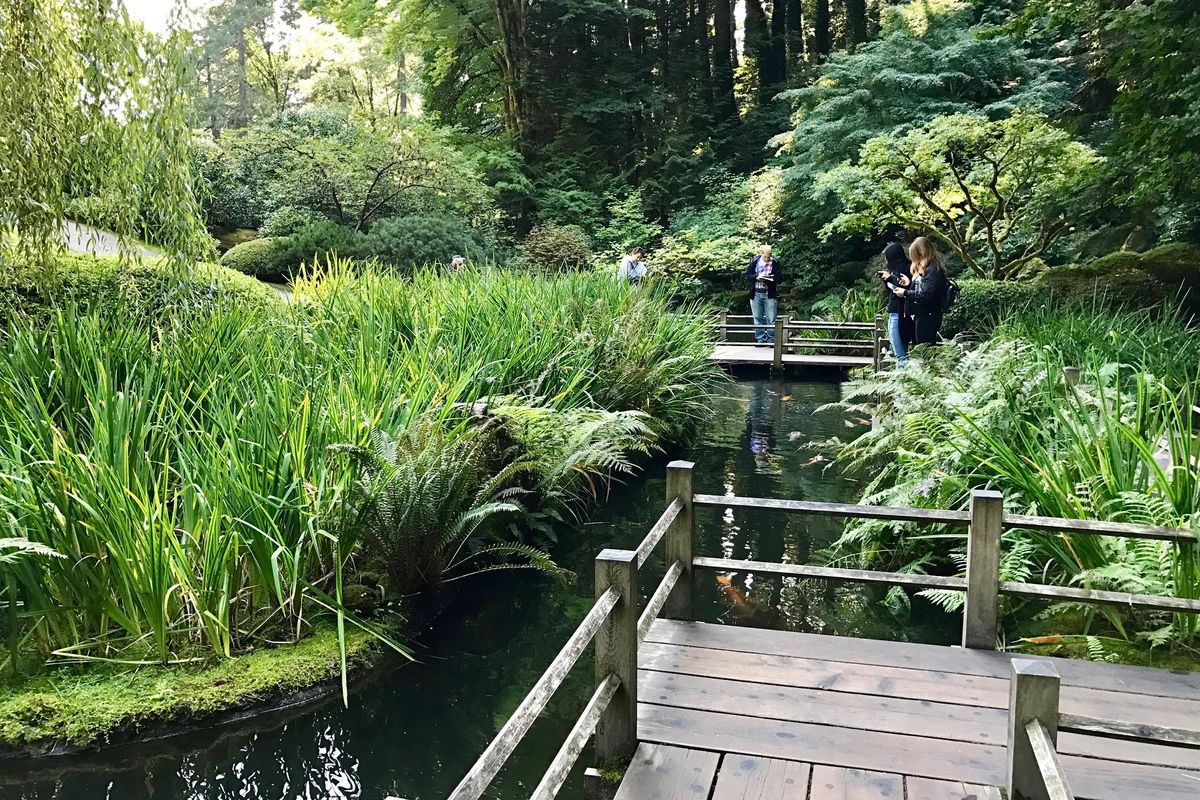Outdoor adventures, inner Zen in Oregon’s quirky Portland

PORTLAND – Oregon’s quirkiest city may tout its desire to “Keep Portland Weird,” but it’s the Zen of the place that takes hold at the Portland Japanese Garden. Tucked away in the steep hills of Washington Park, towering trees shade the winding paths in a haze of verdant green and gilded autumn hues. Lush gardens and flowing streams vie for attention. Time stands still.
We were on a weekend getaway to Portland, ready to do all those only-in-Portland things any visitor must do: Eclectic doughnuts at Blue Star, where the brilliantly flavored pastry glazes – vivid purple bourbon-blueberry, say, or a sunset-hued passion fruit – render taste buds helpless. A stroll through Powell’s Books, the block-size bookstore that swallows you up in literary surfeit. Quirky cafes, quirkier boutiques – and a gastronomic foray to Pok Pok, the James Beard-beloved, Thai street-food joint, where wait times routinely run multiple hours. (And wait, we do.)
But on this particular brisk autumn day, we’ve boarded a Portland Streetcar bound for Washington Park, the city’s 400-acre answer to New York’s Central Park. Tucked into the hills of northwest Portland, the park includes 160 acres of official park – plus the Oregon Zoo and Hoyt Arboretum acreage that constitute unofficial park. In the hearts of locals and visitors alike, it’s all park and it’s all glorious, from zoo to arboretum, the blissfully fragrant International Test Rose Garden and the serene Japanese Garden.
The latter is where we are headed in the hopes of dispelling doughnut damage with a hike. The path up from the entrance gate to the heart of the garden is suitably steep, and our breath quickens as we climb. But the surroundings are so lovely, the walk soon becomes a wander amid wonder.
A flowing stream connects the park’s Strolling Pond Garden, one of more than half a dozen set within this acreage. We catch glimpses of green lushness from the curved Moon Bridge, which bows across the upper pond. Plump koi dart beneath the Zig-Zag Bridge that traverses the lower pond. Irises fringe the walkways. Japanese maples cast crimson leaves on the breeze. And Heavenly Falls tumbles and splashes down a rocky expanse, almost too beautiful for words.
The post-World War II era saw a surge of cultural outreach to the Far East. Japanese gardens were planted in parks across the country, driven, Portland’s park founders noted at the time, by a hope of “forging a healing connection to Japan.” When the Portland Japanese Garden opened in 1967, after nearly a decade of planning, it showcased five gardens designed by Tokyo Agricultural University professor Takuma Tono. Today, the park includes six main gardens, smaller garden installations and a cultural village designed by Kengo Kuma, the noted Japanese architect tapped for the 2020 Tokyo Olympics stadium design.
The gardens represent different historical periods and aesthetic philosophies. Concentric circles are raked into the Sand and Stone Garden, inviting contemplation. Rustic tea gardens are tucked here and there, and hidden benches nestle in the Natural Garden. And on the main plaza, Kuma’s cultural center, with two new gardens and a sleek new teahouse, the Umami Cafe, opened this spring.
Green matcha tea is served with seasonal shibori at this glass-walled teahouse.
Cantilevered and surrounded by trees, the glass-walled cafe service ranges from frothy, jade green matcha to sencha, hojicha and genmaicha teas, accompanied by Japanese sweets. Colorful shibori – balls of soft, sweet yellow-, green- and blue-hued dough encasing a red bean-paste center – share menu space with mochi, matcha rolls and honey-sweetened castella, a sponge cake introduced to Japanese palates by 16th century Portuguese traders. There are savory bites, too, yakitori-style fried rice and savory onigiri. But mostly, there is the view. And that sense of Zen.